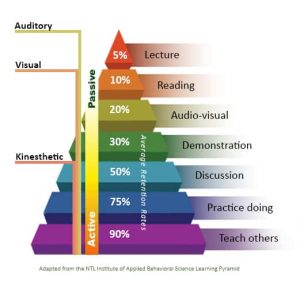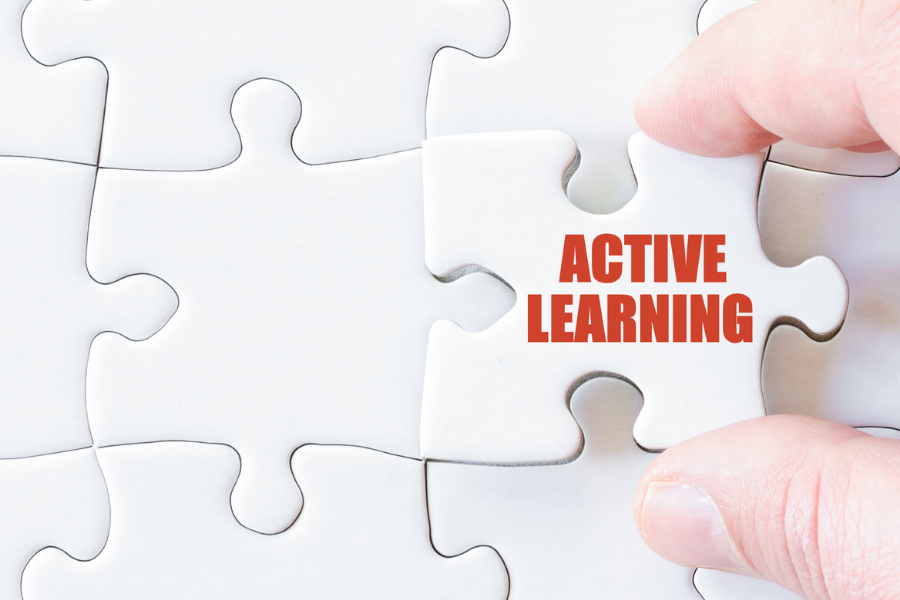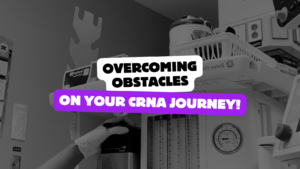In this post we will finish it off with active learning techniques to complete your very own study system.
As you may remember, the first post emphasized the importance of addressing your issues. The second post was focused on defining your core principles. And in the third installment I gave you all the details of the study system I created while in CRNA school.
What is active learning versus passive learning?
Active learning is a type of learning activity in which the student participates or interacts with the course material through role play, discussions, questions and a host of other methods.
Whereas passive learning is a style of learning which involves the traditional approach like reading textbooks, PowerPoints, and listening to presentations. It involves the student quickly and quietly taking in the information but without engaging any further with the material. Therefore, they don’t retain the information or learn as well.
What are the benefits of active learning?
Whether you are a new student starting in the nursing program or your first day as an ICU nurse, you’ve certainly felt there was a huge gap in what you read versus actually doing it. That’s where active learning comes into play.
Another way to put it. During class or even in your unit, are you the one person working hard to figure things out but it just won’t stick. Like I was in CRNA school! If this is you then it’s time to give active learning a try. After weeks of research I realized one of the keys to learning anything, involved being an active learner instead of a passive learner.
Read: Fraud You Say: No Impostor Syndrome Allowed
Here is why you need to do that, active learning:
- Helps students deepen their understanding of a given topic
- Can help students apply and transfer knowledge better
- Builds connections between students, which has also been shown to increase course completion rates and graduation
- Improves your critical thinking
- Fosters the ability to solve complex problems
- Increases your learning potential
Read: Easy Ways to Increase Your Critical Thinking
So, here are 11 active learning techniques:
- Ask yourself questions as you read.
- When taking notes be sure to use your own words.
- Paraphrase what you read after each section or chapter.
- Teach someone else. Talk to someone about the information you’re learning. Use your own words to discuss it with other learners, friends or your family. (If you don’t have anyone who’ll listen, try an imaginary person, or just talk to your pet). Remember this is also a type of kinesthetic learning. According to the Learning Pyramid model, students are able to retain up to 90% of the material if they teach it to others.

- Write down everything you know about a topic on a piece of paper or on a whiteboard. Then compare it to the book or PowerPoint. This is know as the one minute paper. Continue until you can recall all the material.
- Create your own quiz with questions and rationales.
- Come up with examples or scenarios that relate to your own experiences.
- Create mind maps or diagrams that explain the material.
- Develop symbols that represent concepts and use them consistently so they become second nature.
- Take 15 minutes to write down the concepts that are the most unclear or confusing. This is known as the muddiest point technique. Then take time to review these points with the instructor or after class.
- While not necessarily considered an active learning technique, the Pomodoro technique is a time management tool to help you stay focused and increase your productivity as you actively study. It forces you to work within the time frame given instead of against it. The best part is there is an app you can download on your phone so you can get started TODAY.
So now we are at the end of this four-part series, you have a tool kit to create your very own study system so you can confidently learn any information and pass any course on your way to becoming a CRNA. My hope is these tools serve you well in your life and on your CRNA journey!!!
PS. If you didn’t get to explore ways to address your issues from the first post, check it out here. You may read part 2 of the series here to define your core principles. And last week was the third post of my proven study system that helped me learn anything and pass CRNA school.
If you enjoyed reading this post please share it with others!







